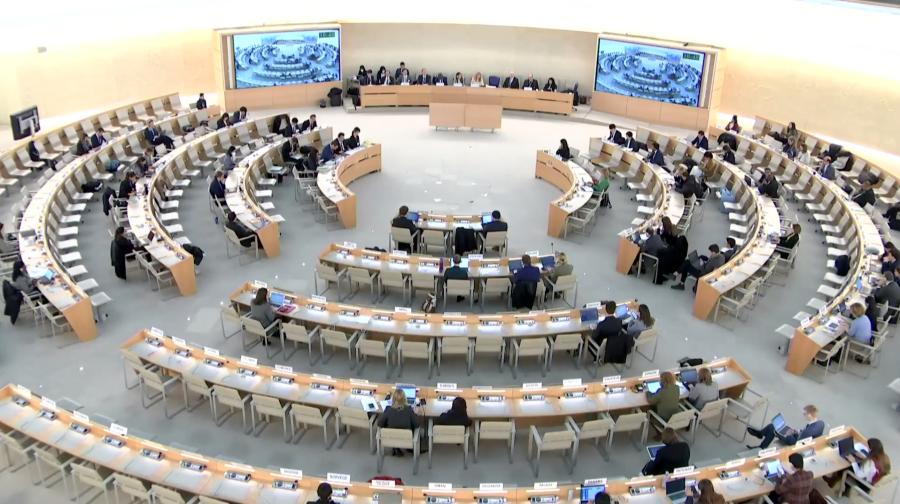In upcoming months, Cultural Survival will add the Ainu Oral History Project to its Special Projects Program, with Native American leader Tom Dostou serving in the role of Project Coordinator. Dostou has been in close contact with the Ainu for several years, and he is someone the Ainu trust and value as a fellow indigenous person. A collaboration between Indigenous People who face similar challenges on opposite sides of the Pacific makes this project especially unique.
Although project initiatives have yet to be solidified, and despite the fact that many challenges, such as language barriers and the tenuous relationship between the Japanese government and the Ainu, may be encountered in the course of the project's development, we have great expectations. The Ainu Oral History Project has the potential to heal, to provide a forum for Ainu in rural and urban areas and to educate greater Japanese culture about the traditional beliefs and practices of Japanese Indigenous People.
The project proceeds in three distinct phases. The first begins in Tokyo, a city with a large Ainu population, where representative members of the group will begin to record and collect oral histories of the community. Proverbs, folksongs, place-name lore, personal memories of childhood, oral narratives, and any other meaningful linguistic materials from the past will be gathered via note-taking, tape- and video-recording, and even e-mail. The desired effect will be to reinforce for the Ainu their rich oral traditions and cultural heritage, and to produce a sense of pride in collective memory and tradition.
The second stage of the project, which has a pedagogical focus, builds on the initial goals by bringing the collected lore into local Japanese schools. Young Japanese, be they Ainu or not, will be taught the basics of multiculturalism at home. The effect will be the promotion of diversity within the classroom.
The third part of the project will bring the Ainu of Tokyo to their original homelands in Ainu Moshir or Hokkaido. The Ainu elders of Hokkaido, who will hear and see their traditions from the points of view of their descendents in the city, will be encouraged to retell the narratives, correct "errors" in storytelling, and to otherwise fill in the gaps in cultural tradition.
The final products will be: (1) a film detailing all aspects of the project, from the initial Tokyo endeavor through the classroom experience, to the reactions and additions of the Hokkaido elders, and (2) a concept CD publication including narrations on CD and printed textual data.
Beyond this project, we see possibilities for a folklore festival in Hokkaido. The presentation of the life stories of two different communities of Ainu, one which has chosen to assimilate and the other which has chosen to remain true to "old days and ways," will give the Japanese community at large a better understanding of who they are as a people, how their traditions have been preserved or lost, and what impact urban life has had on rural tradition. A performative event such as this would make for excellent comparisons between different Ainu communities.
History of the Ainu
The Ainu people are the original inhabitants of Hokkaido and its adjacent areas (including the Kurile Islands and Sakhalin Island). They constitute a distinct culture, with a livelihood based mainly on hunting, fishing, and gathering. Their lifestyle is inseparably connected to their natural and spiritual environment.
While there are few available statistics on the Ainu, it is estimated that their population is at least several hundred thousand. Due to societal and economic discrimination, they tend to hesitate to express or define themselves as Ainu. The assimilationist policies of the Japanese government have resulted in large-scale language loss. Only a handful of elders now speak the Ainu language.
The Ainu have been seeking recognition as an Indigenous People of Japan in order to protect their distinct culture and increase sensitivity to the historical injustices done them. Until recently, the Japanese government had not officially recognized the existence of an Indigenous People. Instead, the government characterized the Ainu as an ethnic minority group and asserted that, as individuals only, the Ainu were entitled to equal protection under the Japanese constitution. Accordingly, the government denied collective Aboriginal rights to the Ainu. It was not until 1997 that a Japanese law giving official recognition to Ainu language and culture was passed.
The Ainu's treatment by mainstream Japanese society closely parallels that of the original inhabitants of the United States, and, despite their geographic separation, a similar historical treatment closely connects Native Americans and the Ainu. For example, members of both collectives were removed from their ancestral lands by acts of government, both faced overwhelming pressure to assimilate, and both continue to suffer discrimination. This Special Project of Cultural Survival will be an excellent opportunity to bring two indigenous groups together to share and discuss current challenges faced in this new millennium.
Article copyright Cultural Survival, Inc.

